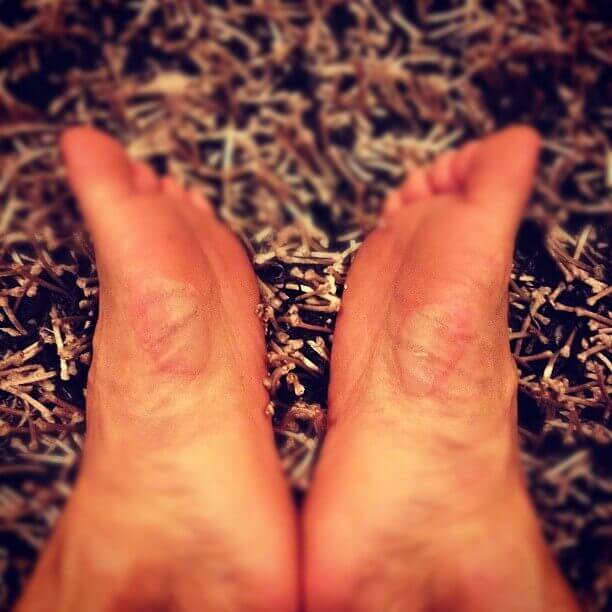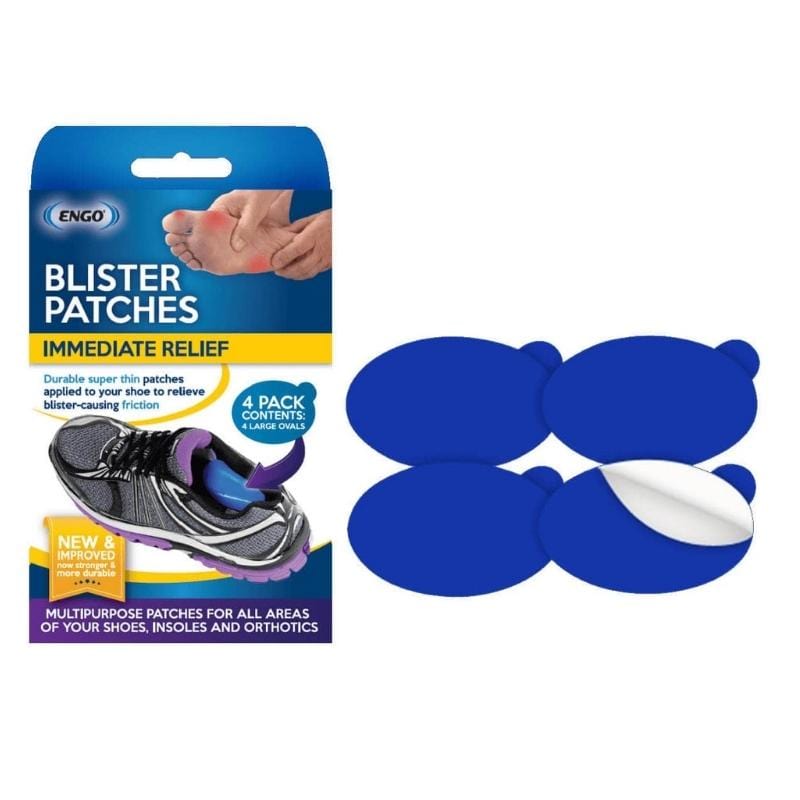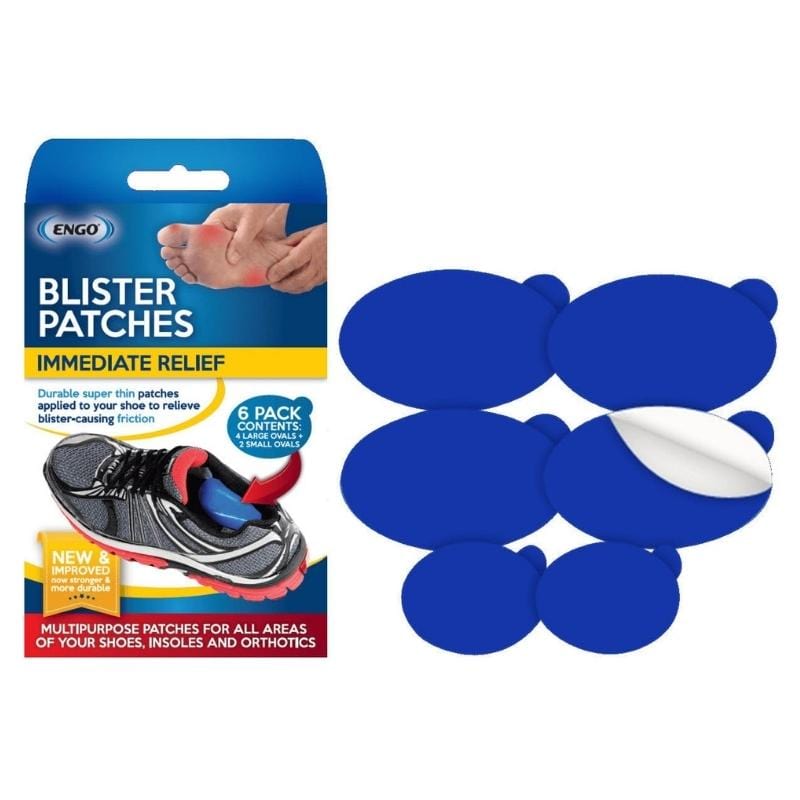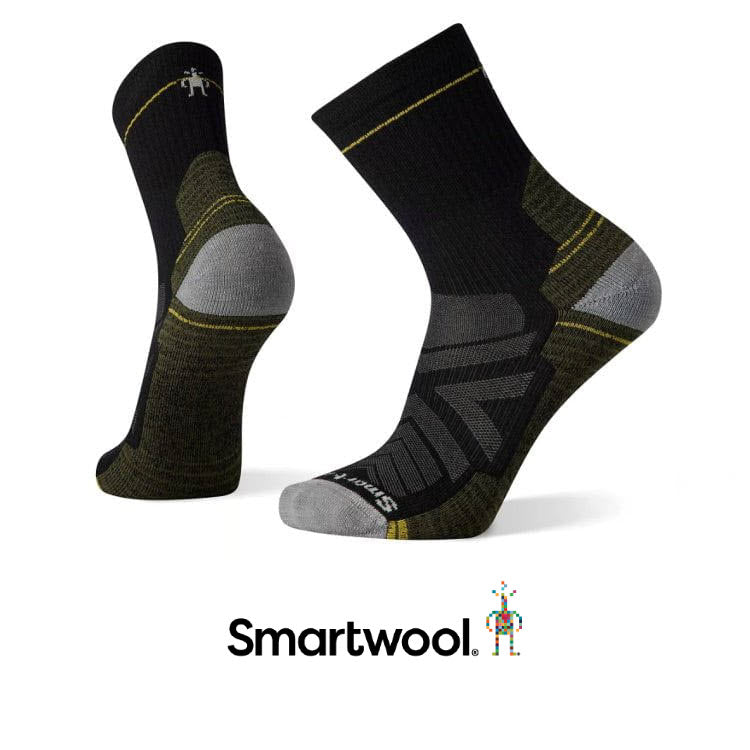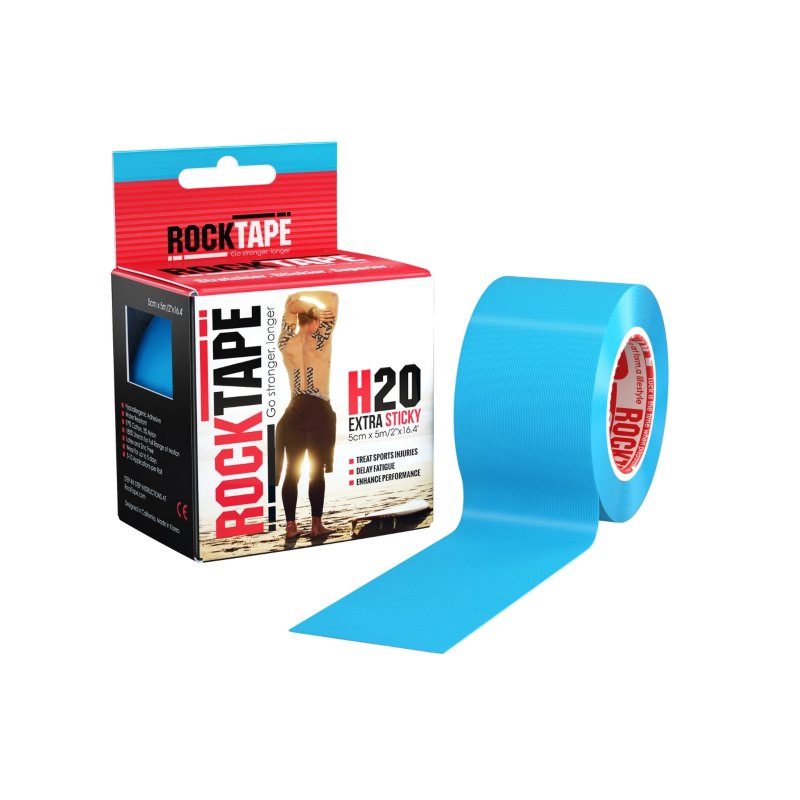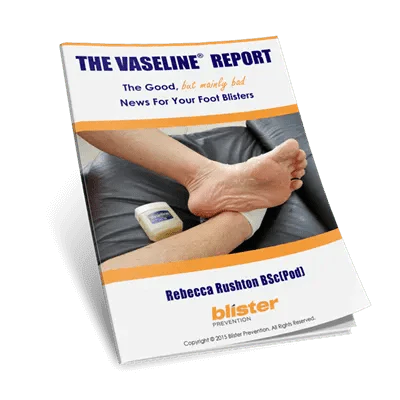Arch blisters are curious, in that the arch isn't a particularly weightbearing area of your foot. In this article, you'll hear from two people with arch blisters, one with edge arch blisters and the other with under arch blisters.
Case Study 1: "Edge" Arch Blisters With New Shoes
Paul did all the right things when he brought new shoes. He was happy with his old pair, so naturally, when the time came, he upgraded to the newer version of the same model. This is what his arch blister looked like in the early stages (below). If you want to see how his blister ended up (and you’re not squeamish) take a look here (right foot) and here (left foot).
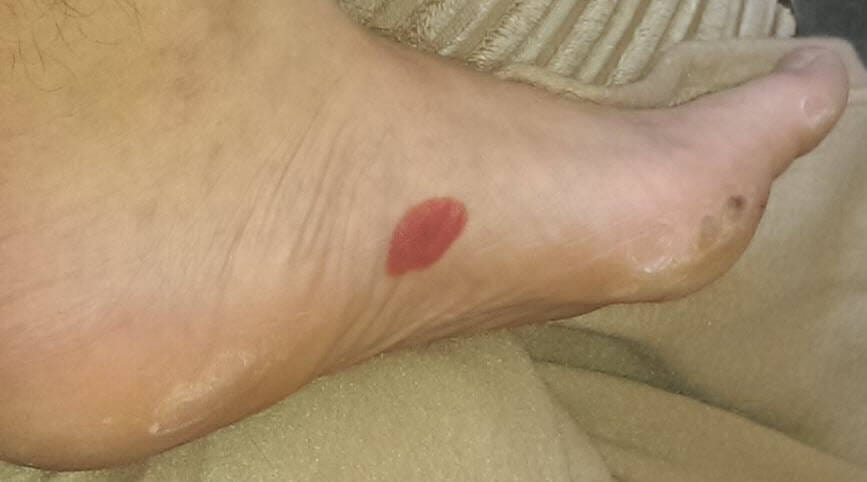
Blood-filled arch blister
These shoes are giving me blisters in my arch. As with all new trainers I wore them in by using them as my weekend trainer - walking in them and doing a few shorter runs here and there so they were adjusted to my feet, trying to minimise the potential of blisters / problems.
As his distance increased, Paul noticed something happening under his arch.
The first 8 mile run I had no problems. Then I used them for a 20 mile run and I could feel a little tingling in the arch area, but no massive blister. But on a cold wet day, severe blistering occurred, despite covering my arch areas in Zinc Oxide tape and wearing my usual anti-blister socks.
As a result, Paul went back to his local running shoe store to get some advice.
They told me the has an extremely high arch which certainly may have been a factor in the blistering occurring.
What Would You Do At This Point?
What would you do? You’d probably start looking for a new pair of shoes. Something a bit lower in the arch or less cut-in at the midfoot? That’s quite reasonable, on the face of it. But let’s remember, Paul was otherwise happy and comfortable in these shoes. And covering some decent miles!
My Advice, Do This Instead For Your Arch Blisters
My advice to Paul was to get some ENGO Blister Patches. Then use the 2-Patch Technique for applying them to his shoe and insole (or orthotic if you're wearing one). Paul's arch blisters are “edge blisters” - they form where the edge of the insole (or orthotic) meets the side of the shoe.
If you have blisters in a similar spot, like Paul, you'll need 4 large oval patches in the ENGO 4-Pack - since you need two patches for each shoe. Put one patch on the insole (or orthotic), then one on the side of the shoe. It’s called the Two Patch Technique. Watch the video below to see how to apply the patches and why this technique is best.
Using Engo Patches in this manner allows your sock to easily slide over the (now) smooth shoe/insole interface. The result is no blisters. Why? Because the patches have a very low friction level (COF = 0.16) - the lowest friction of any material you'll find in a shoe. Take a look at the graph below. And read this to learn more about how ENGO patches work and how to apply them to your footwear.
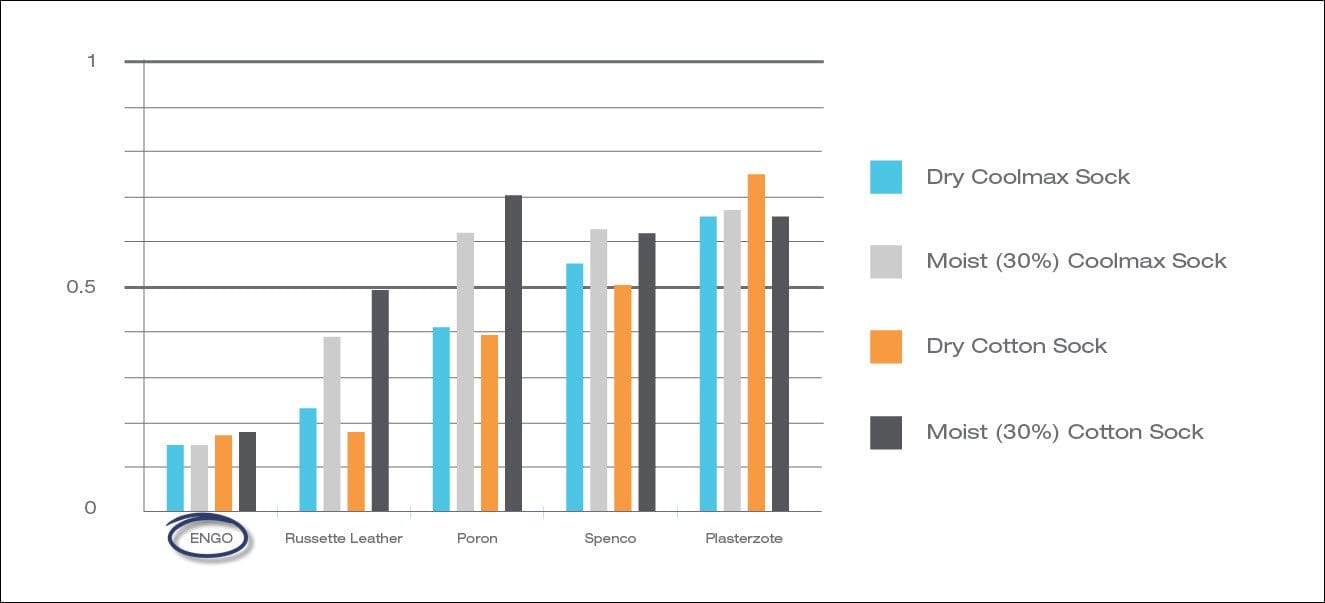
ENGO Blister Patches low friction level compared to other materials
Case Study 2: "Under" Arch Blisters With Orthotics
My orthotics are giving me blisters under my instep.
The majority of arch blisters with orthotics are edge blisters. But some occur more underneath the foot, away from the orthotic edge.
Orthotic arch blisters are quite common in runners. For instance, a quick scan of running forums shows just how common, plus some insights into preventing them:
- https://www.runnersworld.co.uk/forum/health--injury/instep-blister-from-orthotics/41922.html
- http://www.coolrunning.com.au/forums/?showtopic=15919
- http://www.coolrunning.com.au/forums/?showtopic=4860
- https://www.runnersworld.co.uk/forum/health--injury/orthotics-and-blisters/286660.html
1) Your Skin Will Toughen (Or Use An ENGO Patch)
Firstly, the skin of your arch will toughen a little as it gets used to dealing with the new forces being applied to it. However, it's important to know that adaption can only go so far. If your skin doesn't become resistant enough, or you don't have time to wear them in gradually, just use the ENGO Blister Patches as described above.
2) Orthotic Modifications
Secondly, your podiatrist can modify your orthotics to stop your blisters. Let me expand on this second point with a few techniques your podiatrist will be thinking about in trying to stop your arch blisters: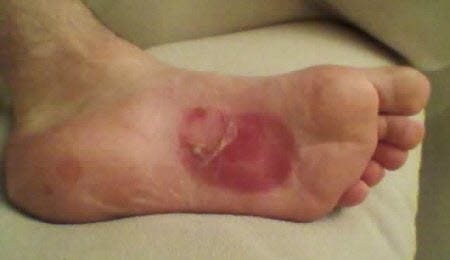
Blister under the arch of the foot
a) The Arch Is Too High
This one’s easy to understand. Your podiatrist may reduce the arch height of your orthotic, reduce its stiffness or change it in some specific way. On the other hand, a cushioned cover might be added to reduce pressure and absorb shear. Something like Spenco - it looks and feels a bit like wetsuit material. Research has found Spenco works a little better than Poron at preventing blisters. As a DIY option, if your orthotic has no cover on it and you feel like you need a bit of cushioning / shear absorption, you could try putting the shoe’s innersole (if it's flat and non-contoured) on top of your orthotic. It's worth a try if you’re in a pickle. But your podiatrist can organise something more permanent for you. Oh, and don't forget gluteal strengthening exercises to reduce the amount of internal leg rotation and foot pronation.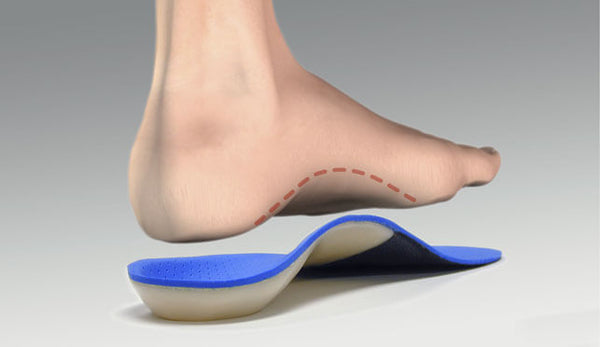
For arch blisters, is the arch of your orthotic too high or too low? Orthotics with a high arch height and cushioned cover
b) The Support Is Inadequate
This one's a little counter-intuitive but something we commonly encounter as podiatrists. If your orthotic is not dealing adequately with the forces causing your foot to pronate and arch flatten (assuming this is why you have orthotics in the first place) you may get blisters under the arch. Your podiatrist will be thinking about something called the windlass mechanism.
This is a function of the arch/big toe where when you lift your big toe, your arch lifts also. It’s an important function for preparing the musculoskeletal structures of your foot for propulsion. For the skin, put simply, if the windlass mechanism isn’t working properly, there will be more shear forces for the skin to deal with under your arch. Craig Payne has written and lectured a lot about how we can facilitate the windlass mechanism with various orthotic prescription variables (design features) – things that reduce the force needed to engage the mechanism; and things that bring it on earlier. Here’s a quick overview. Sorry if this is double-dutch to you - your podiatrist will know all about it.
- Reduce the force needed to establish the windlass mechanism by:
- Inverting the rearfoot
- Everting the forefoot
- Plantarflexing the first ray
- Promote earlier onset with:
- A heel lift (including pitch aka drop)
- Lifting the big toe
There are many design features (and physical therapies) that podiatrists can use to achieve these requirements.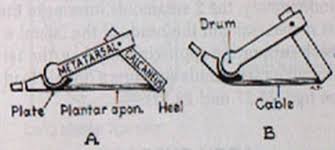
Windlass mechanism
c) Your Calf Muscles Are Tight
The tighter your calves, the higher the arch-flattening forces. Wearing an orthotic won't help you - it will only be uncomfortable. In these situations, you'll need to stretch your calf. This is so, so important with arch blisters. While the stretches will take a month or so to really kick in, I can't stress enough how helpful they will be in the long run. But technique is everything with calf stretches. So, watch the video below and make a start today.
How Long Does It Take To Heal An Arch Blister?
The skin of the feet, particularly the bottom surface, is much thicker than skin elsewhere. It will take around 6 weeks for the last of the damaged skin of your arch blister to shed and be completely healed. But you can take the pain out of it almost immediately, even if it hasn't healed yet. The prevention strategies you've just learned are a very big part of this. To heal an arch blister and make it feel less painful, just follow the same blister treatment principles as you would for any foot blister.
Blister Treatment = Looking After The Damaged Skin + Blister Prevention
Conclusion
It's worth seeing a podiatrist to determine if your foot mechanics needs fine-tuning. Calf stretches, orthotics and orthotic modifications are really important to negate the arch flattening forces causing your arch blisters. However, if you're dealing with arch blisters, use the ENGO Blister Patches to implement a quick fix. You'll be surprised at how much relief you can get. This may be all you need to do. Click the "view product" button below.
References
Payette M. 2010. Friction management for diabetic foot problems. Presented at the 36th Annual Meeting and Scientific Symposium of the American Academy of Orthotists and Prosthetists.
Spence WR and Shields MN. 1968. Prevention of blisters, callosities and ulcers by absorption of shear forces. Journal of the American Podiatric Medical Association. 58: 428-34
